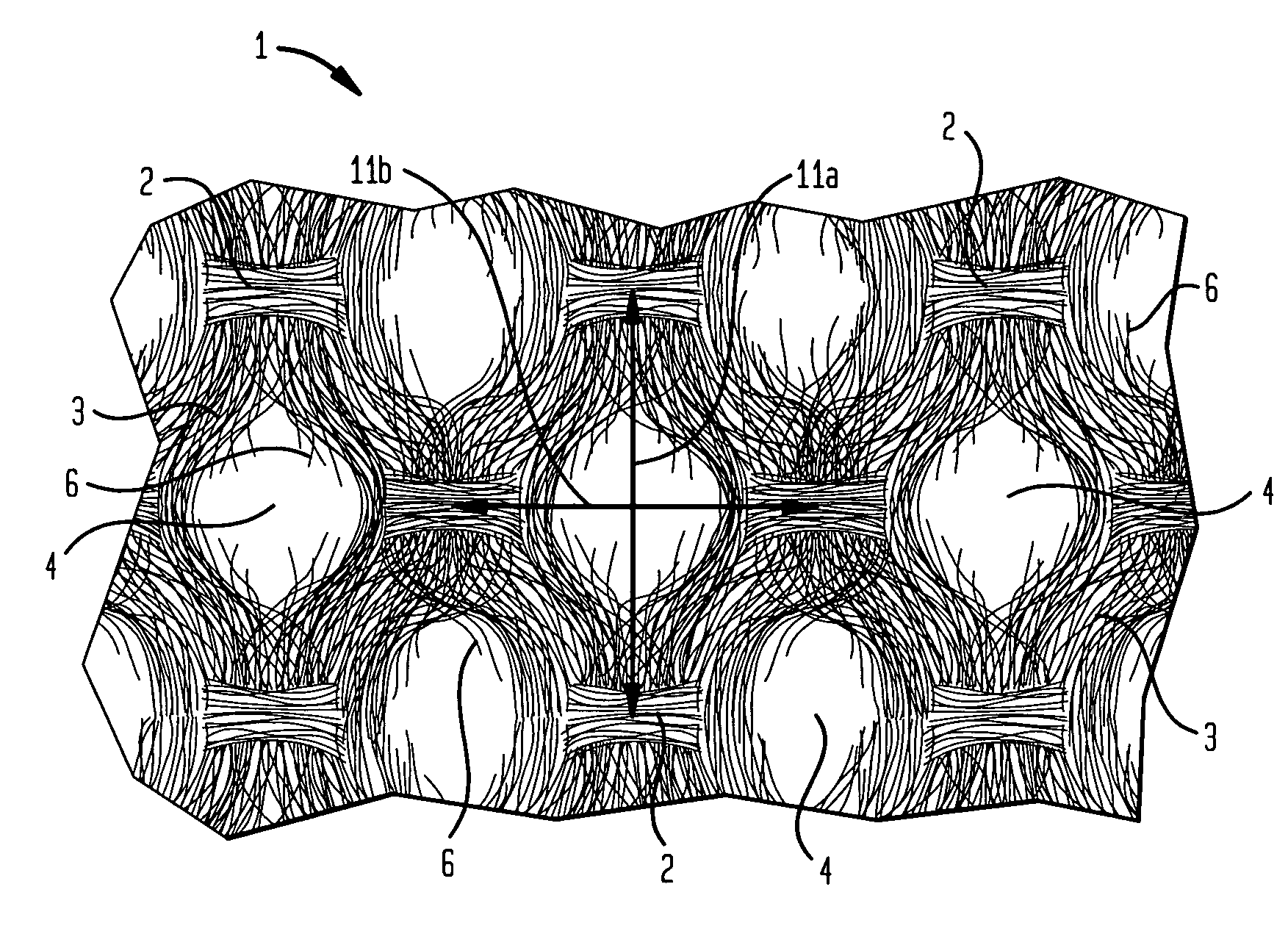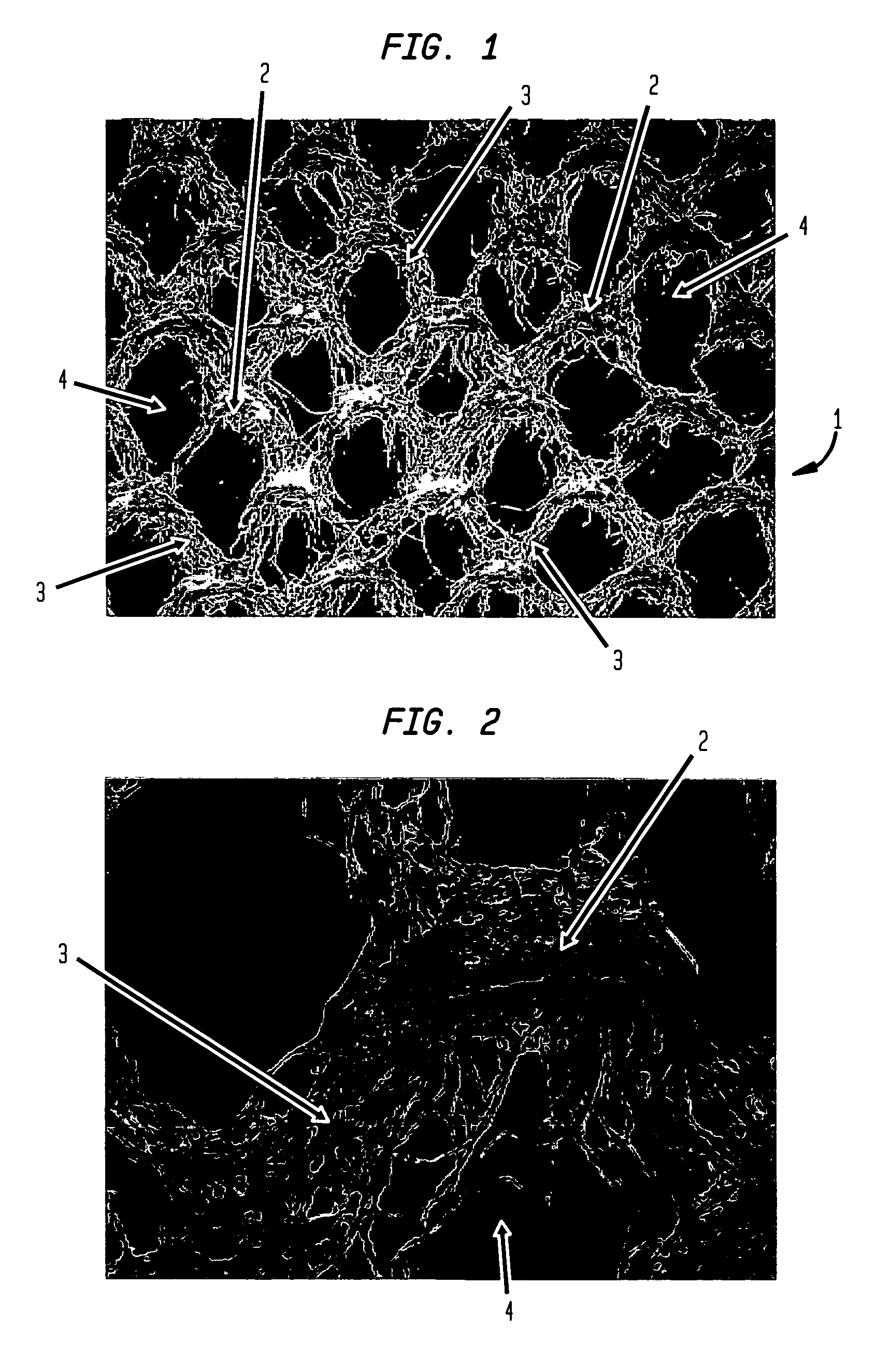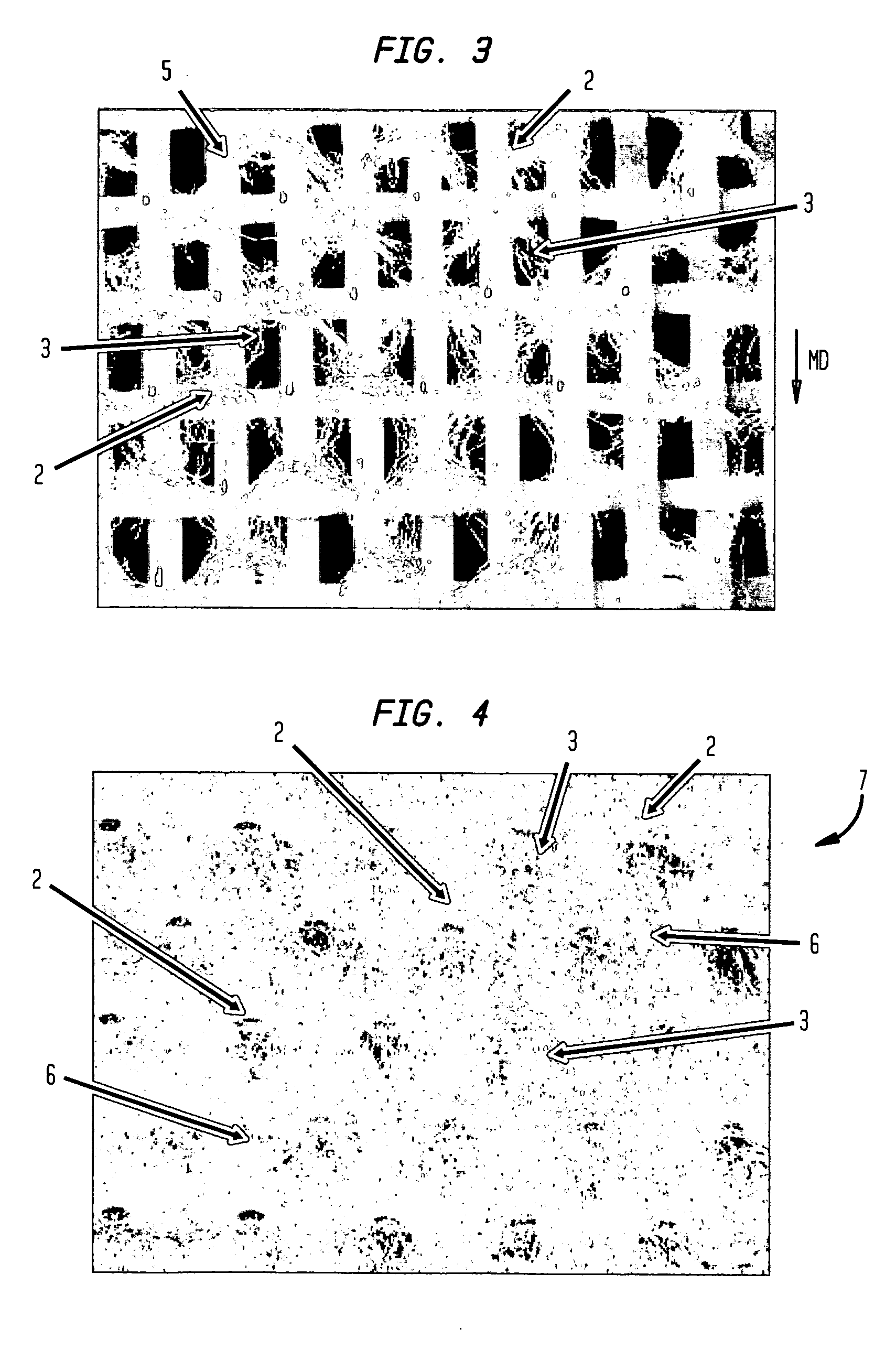Multi-ply paper towel with absorbent core
a technology of absorbent core and absorbent towel, which is applied in the field of absorbent products, can solve the problems of reducing the absorbency of absorbent core, affecting the effect of fabric creps, and affecting the ability of fabric to be effectively transferred
- Summary
- Abstract
- Description
- Claims
- Application Information
AI Technical Summary
Benefits of technology
Problems solved by technology
Method used
Image
Examples
Embodiment Construction
[0075]The invention is described below with reference to several embodiments. Such discussion is for purposes of illustration only. Modifications to particular examples within the spirit and scope of the present invention, set forth in the appended claims, will be readily apparent to one of skill in the art.
[0076]Terminology used herein is given its ordinary meaning and the definitions set forth immediately below, unless the context indicates otherwise.
[0077]The term “cellulosic”, “cellulosic sheet” and the like is meant to include any product incorporating papermaking fiber having cellulose as a major constituent. “Papermaking fibers” include virgin pulps or recycle cellulosic fibers or fiber mixes comprising cellulosic fibers. Fibers suitable for making the webs of this invention include: nonwood fibers, such as cotton fibers or cotton derivatives, abaca, kenaf, sabai grass, flax, esparto grass, straw, jute hemp, bagasse, milkweed floss fibers, and pineapple leaf fibers; and wood ...
PUM
| Property | Measurement | Unit |
|---|---|---|
| contact angle | aaaaa | aaaaa |
| pressure | aaaaa | aaaaa |
| weight | aaaaa | aaaaa |
Abstract
Description
Claims
Application Information
 Login to View More
Login to View More - R&D
- Intellectual Property
- Life Sciences
- Materials
- Tech Scout
- Unparalleled Data Quality
- Higher Quality Content
- 60% Fewer Hallucinations
Browse by: Latest US Patents, China's latest patents, Technical Efficacy Thesaurus, Application Domain, Technology Topic, Popular Technical Reports.
© 2025 PatSnap. All rights reserved.Legal|Privacy policy|Modern Slavery Act Transparency Statement|Sitemap|About US| Contact US: help@patsnap.com



